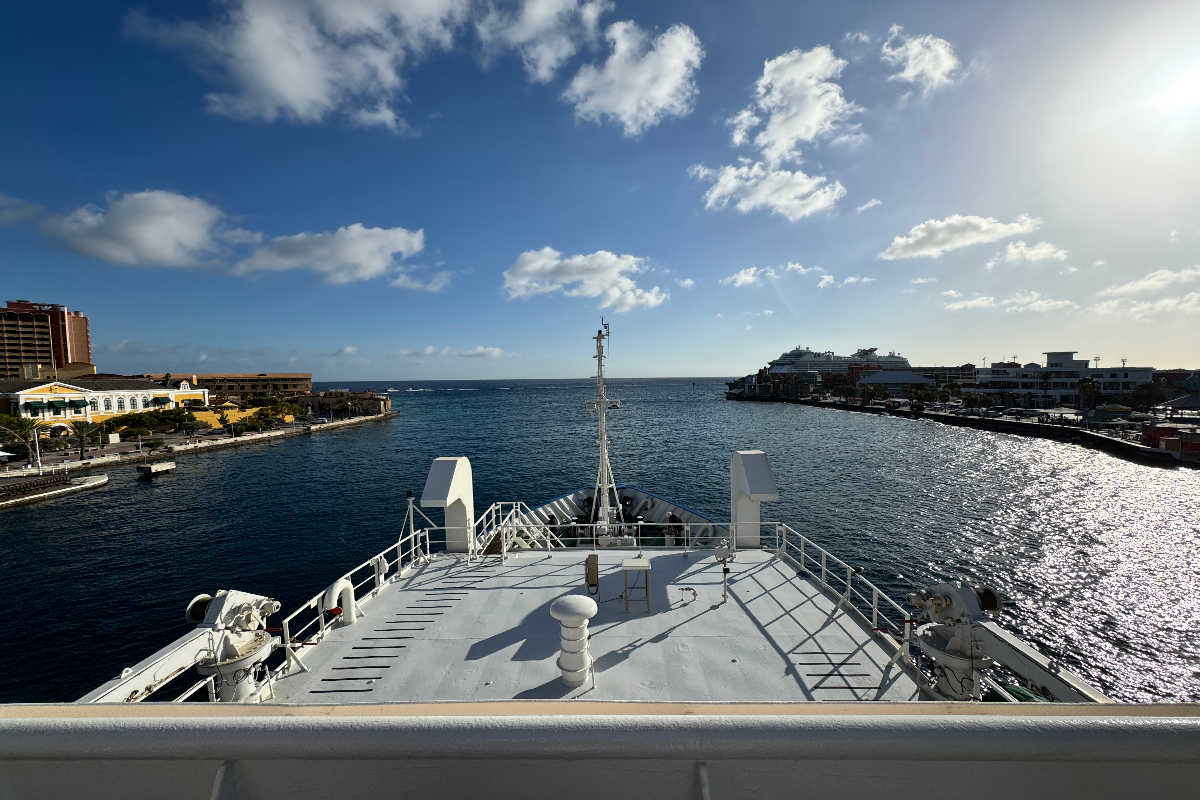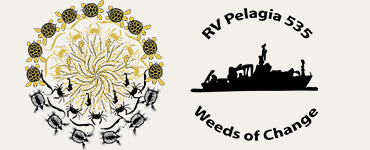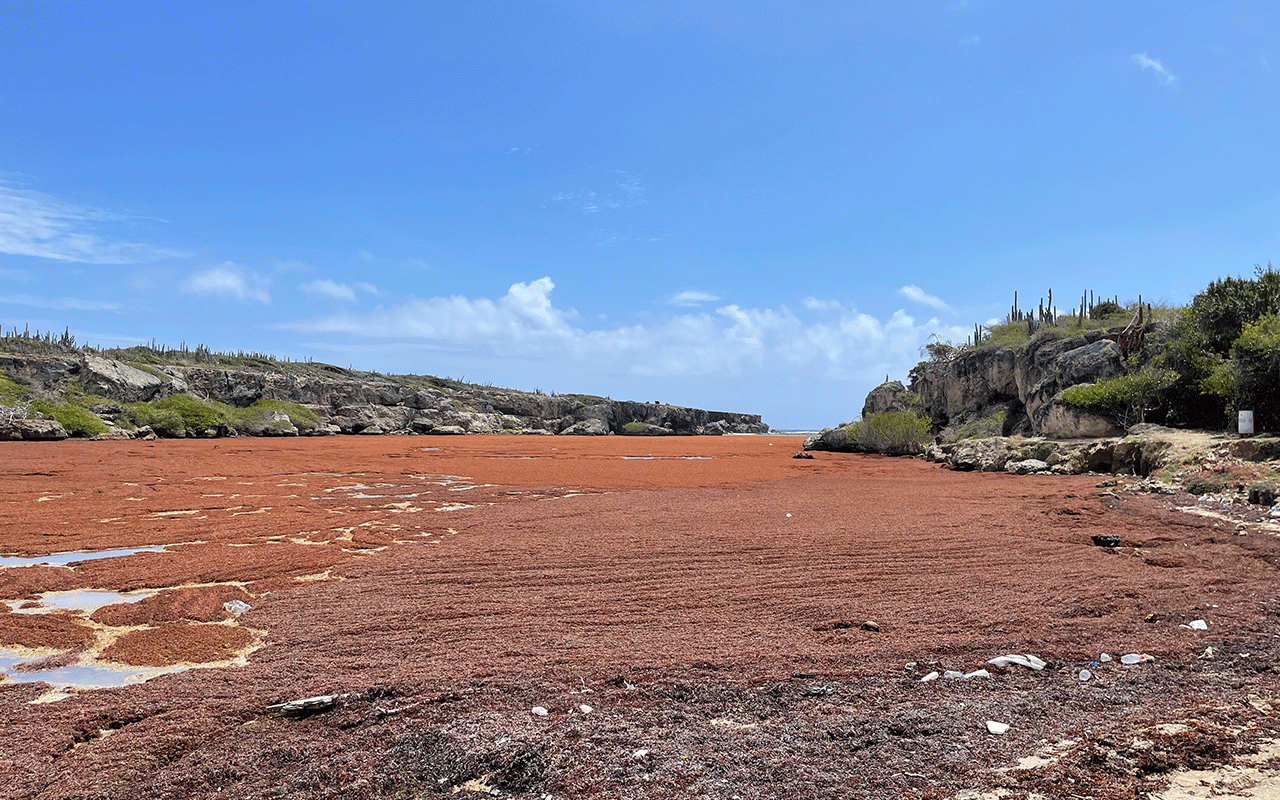
From the floating rainforest to our floating classroom
Written by Linda Amaral-Zettler, Professor/Chief Scientist 64PE542 Expedition – Seaweeds@SEA
The sea-going component of our course ended today greeted by calm seas and partly cloudy skies as we entered the port of Willemstad, with no rain to complicate our transition to the shore component to be continued at the CARMABI Foundation in Piscadera.
For the past 10 days the students have been hard at work measuring the relative contributions of the different floating Sargassum types, performing DNA extractions of water and algae underway, and characterizing the physical and chemical parameters in the waters through which we steamed as the “High Seas” became their floating classroom. The atmosphere is filled with excitement and anticipation as the students reflect on their journey at sea (all first-timers aboard a research expedition) while eager to experience the next phase of their journey ashore. They have undoubtedly learned a lot, as everyone does working at sea, myself included.
It is also a special voyage for me in that it will be my last one before the Pelagia is retired and her successor the Anna Weber van Bosse comes online later this year, beginning of next. She has been a great resource for our research both on Sargassum and plastic pollution and, after this expedition – also a platform for experiential learning for the University of Amsterdam’s Seaweeds on Shore and at Sea course. Perhaps the Anna Weber van Bosse will also have the privilege of serving the likes of the same in the future.
Despite the unique wonder of observing the Sargassum “golden floating rainforest” ecosystem at sea – the darker reality of Sargassum strandings on shore appear to have no end in sight into the foreseeable future. I part the ship with words of thanks to Captain Oenema and the wonderful crew of the Pelagia that made our expedition such a success. Vaarwel aan, Pelagia. We zullen je missen. Farewell, Pelagia. We’ll miss you.
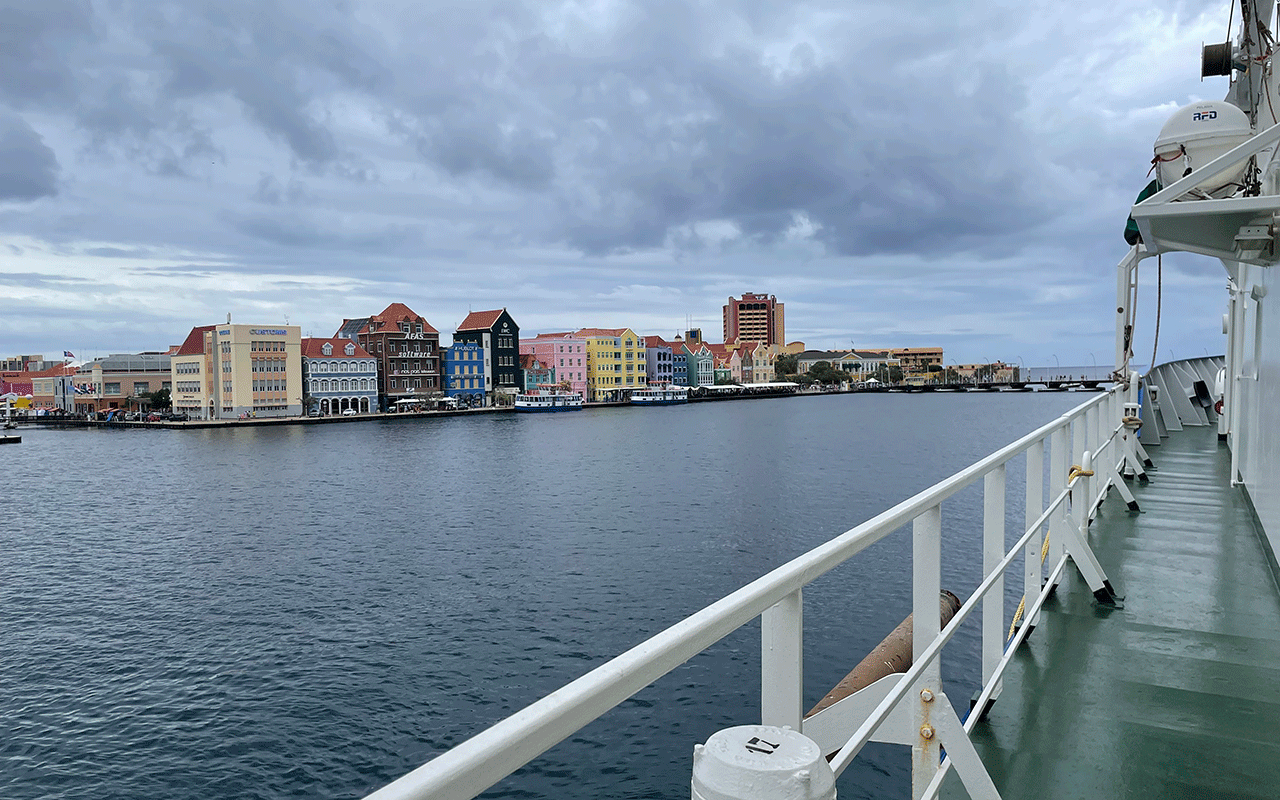
From the sky to the seafloor of the Caribbean
Written by Martina De Churtichaga, Olle Juch & Iago Martins
The sea wakes up calmer than the previous days, with lesser waves, a beautiful sunrise and a lot of Sargassum. We are now at the northern end of Curaçao’s Exclusive Economic Zone.
The clock hits 7:00 AM and we all sit together for breakfast, where silence is always absent. Afterwards, we meet for our regular science meeting in the wet lab. An exciting day lies ahead! As part of our NIOZ expedition we continued our research into the abundance and ecology of Sargassum, but this journey also took us far beyond the surface...
Our chief scientist, Linda, spearheads an expedition of her own with a group designated to begin uncovering the mysteries behind the DNA surrounding the Sargassum community, an intensive, meticulous, albeit rewarding work. The rest of the team lead the usual procedures: Manta trawls and the CTD, which goes smoothly, as we’ve become Sargassum sorting masters at this point.
After an exquisite but rapid lunch, a group of us join our other coordinator, Erik, to the front deck where we deploy the drone. The images will be used to get an overview of the extent of the sargassum cover and to potentially quantify it. Professor Erik, behind the controls, manages a perfect approach to the deck despite the wind. Two students, Martina and Floor, then move quickly to trap with a blanket so that it will not get lost to the sea.
After this eventful afternoon, we all gather in the dry lab for the exciting transect of the camera sled at 4.2 km deep. The camera moved for an hour and a half, dangling just a few meters above the seafloor, allowing us to uncover the final journey our dear Sargassum takes: Resting at the bottom of the big blue abyss, where mystic and intriguing creatures inhabit and may make of our brown algae their meal.
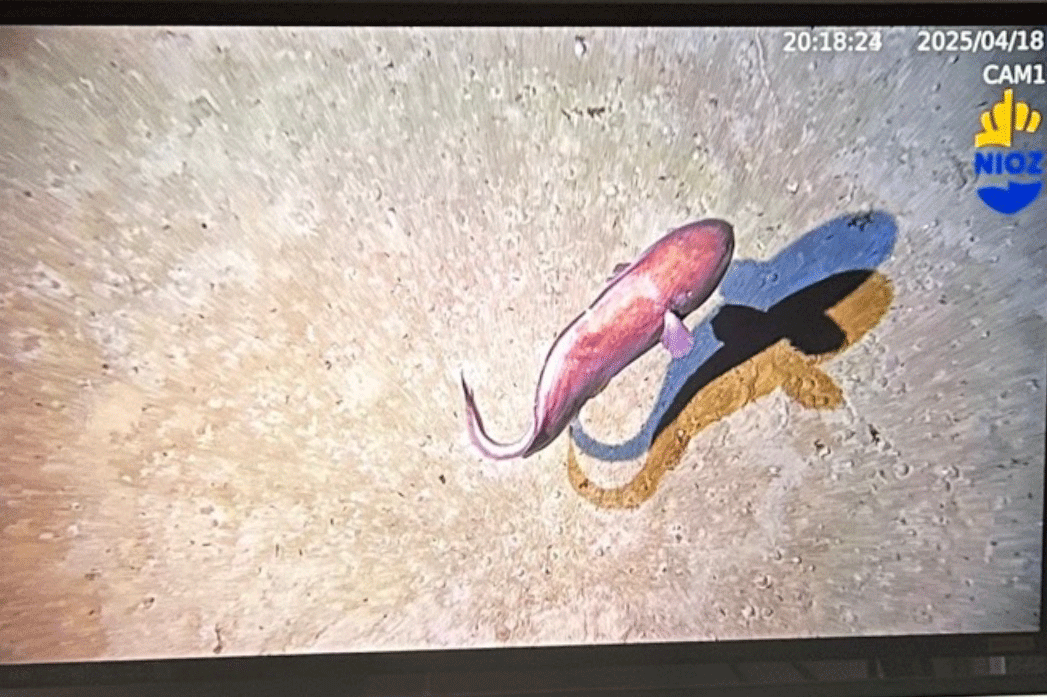
All hands on (a Sargassum-covered) deck
Written by Emilia Martín, Roos Wiessing, Karla Cisneros, Floor Spijkerboer
After a relatively calm start, the sea reminded us who’s boss. As we sailed north of Bonaire, the waves picked up and it didn’t take long for seasickness to spread across the team—but despite that, we pushed through and successfully deployed three manta trawls and a CTD, just as we had on day one. In the afternoon, we had a recorded lecture by expert Dr. Jeff Schell from the Sea Education Association in Woods Hole, MA USA, followed by a video link Q&A session. We learned more about the history of Sargassum, what it is and where it comes from. It turns out that Sargassum is a complete floating ecosystem with a complex food web. One takeaway was clear: even among experts, many questions about Sargassum remain unanswered, especially in the face of climate change.
Today was day three on board of the Pelagia. Sampling in the sea north of Bonaire turned out to be more work than expected due to the large Sargassum quantities that were hauled. We began to practice differentiating between the “imposter” morphotype and its counterpart (S. fluitans III) which was quite time consuming and difficult. On a brighter note, we found more critters among the pile, including a trigger fish and crabs that we freed after counting. A beautiful Janthina purple snail was also found in our haul, which was pretty exciting.
Two new experiments were set up today: a growth experiment and eDNA extraction. The experiment was set up at the back of the ship in large tank simulating a natural environment. Each species was placed into these aquaria and during the next couple of days, their natural growth rate will be determined. The eDNA (environmental DNA) extraction was set up today to find out the attached community associated with the different genotypes of Sargassum in different regions.
After receiving Curaçao approval earlier today, for the next 15 hours we are sailing north, where we’ll continue our sampling efforts. We’re excited to expand the scope of our work.
Stay tuned as the Sargassum story unfolds!

First days at Sea! Sargassum Ahoy!
Written by: Felix, Matthew and Nathalia
Two days ago, we boarded the RV Pelagia in Curaçao to study Sargassum, a floating marine brown macro-alga (i.e. seaweed) that has massively expanded its growth across the Atlantic. This growth has led to strandings on the shores of many coastal areas, leading to ecological, economical, and health-related issues. This cruise is looking to identify and process Sargassum species that are found in the Southern Caribbean around Aruba, Bonaire, and Curaçao. Before we departed, we spent a full day on the Pelagia getting accustomed to the crew and ship. We helped secure the cargo, set up lab equipment, and store provisions before leaving shore. Everyone has been nothing but warm and welcoming, and the food has been the best unexpected surprise. Our cooks have been an essential part of our daily routine!
The weather has been sunny but windy, and the waves have been manageable so far. We wasted no time beginning the sampling campaign, launching our manta trawl and a rig with CTD profiler and hydrocast. The former is a manta-shaped metal frame with a long net attached, which is towed in the water alongside the Pelagia to catch anything floating at the surface. The latter is a probe which measures conductivity, temperature and depth as it is lowered 500 m deep into the water surrounded by sampling bottles that are taking water samples at specified depths. We already found all three floating Sargassum genotypes. In addition, a suspected fourth type, dubbed the “imposter” by collaborators from Mexico, is appearing at regular intervals. During our manta trawl surveys, we were also looking to identify any mobile fauna associated with Sargassum. Today, we identified, among others, endemic Sargassum species including a nudibranch, anglerfish, and crabs!
It’s exciting for all of us to be doing research at sea for the first time–getting to know the Caribbean and studying the double-edged sword that is Sargassum.
See you at sea! Felix, Matthew, and Natalia
